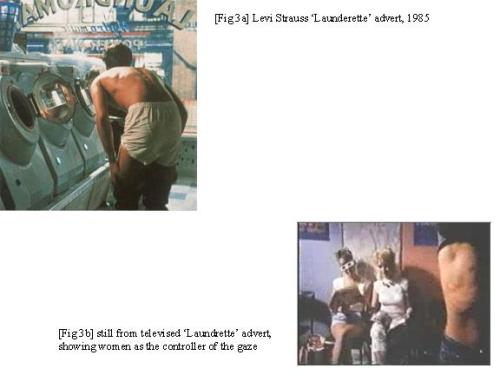(Catherine Lucas, May 2006)
The Impact of Fashion Photography on Consumer Choices and Embodiment of Identity.
The manner in which we, as consumers, choose to dress, depends heavily on the psychological effects imposed upon us by images projected daily on us. These images may come in advertising, or photographic media, and even in film and music videos but generally none influence us so potently as images of fashion photography, which generate so many conflicting ideas of what it is socially acceptable to look like in terms of physical attributes, and which garments we should be wearing.
“Lakoff and Scherr… claim that fashion photographs generate enormous dissatisfaction among women because they create unrealistic expectations that most women are unable to meet.”[1]
The gangly, unblemished, fresh yet slightly androgynous form of Kate Moss[2] posing awkwardly in the Calvin Klein Obsession adverts is not an image easily forgotten by those who have seen it. The photographs are iconic, an emblem of the brand, incorporated into its heritage, and stands out as one to inspire a generation of waif-wannabes. Websites not only guarding against the dangers of anorexia nervosa, the condition in which people feel that they must starve themselves to lose weight, no matter how thin they become, but also websites promoting so-called ‘thinspiration’[3], in which those promoting anorexia and associated images as an ideal of beauty, use the image of Kate Moss in these adverts as either a deterrent or an incitement to desirable appearance. This is an extreme reaction to a fashion photograph and proves the incredible lasting impact (for good or bad) of some prominent or ‘iconic’ images.
According to Diana Crane (professor of sociology at the University of Pennsylvania) the goal of fashion “is to project images that are intended to attribute meanings to items of clothing.” Fashion photography serves to create an idealised ‘character’, a connection between the model and the clothing, which influences self-perception and social standing. For example, in the magazine advertisements for the ‘Dior Addict’[4] fragrance, the model’s image is distorted, and her pose purposely wanton and sweaty, glamorising the idea of a drug-induced ‘trip’. However, as Crane puts it, “fashion photographers have synchronised their themes and images with those that circulate in youth cultures and…the media…”[5] Fashion photographers have observed an already present, underlying glamorisation of drug culture in youth society and the general media, and have used it to their own advantage. By generating a high-impact advertisement that will be seen in all the key fashion and lifestyle magazines, the photograph is promoting not only the product, but also an elusive and (allegedly) exciting area of society. Those influenced by the advert might not only buy the fragrance, but also adopt elements of the clothing and lifestyle into their own identity.
It is not only advertising which may use fashion photography in influencing not only what we wear, but also out ideals of celebrity culture and social standing. Elizabeth Hurley became the centre of great media attention in 1994, when she accompanied Hugh Grant to the premiere of ‘Four Weddings and a Funeral’ wearing a stunning Versace evening gown secured at the sides with gold safety pins.[6] The image of this then largely unknown actress, and the stunning dress she was wearing, instantly dominated the media headlines. The images of this dress have achieved iconic status, a place in fashion history in their own right. Women craved the elegant yet sexually provocative styling affected by these photographs.
Through the huge attention to the paparazzi shots of this ensemble, Hurley’s figure, trim yet curvaceous in the right areas, became the ‘perfect’ body, and one that women believed might actually be attainable, rather than that of Kate Moss. However, one commentator, the author of ‘Is being Thin really that Great?” says of Hurley:
“The patron saint of thin, Elizabeth Hurley, never seems to tire of offering titbits of advice on maintaining her Twiglet proportions. Last week, she ‘revealed’ she is always hungry, hardly eats a thing and will occasionally allow herself to pig right out on six raisins. It’s the ‘six’ that gives her away as a total obsessive.”[7]
According to a report in the Times,
“The crazed system across the media that prizes celebrity thinness and leads “style icons” such as Liz Hurley to announce that if she looked as “fat” as Marilyn Monroe she would kill herself, needs to be thoroughly upended. Because Kate Moss is thin she is prized and paid millions to lead “campaigns” across the media, rather than identified as an ill- educated drug addict who managed to miss her only child’s third birthday because she was in a drying-out clinic.”[8]
Clearly, behind the woman [Hurley] idolised by many is just another woman driven by images of ‘perfection’ and fearing degradation in society –one of the severe and prominent dangers of the ‘celebrity culture’. Hurley’s ‘obsessive’ nature may be compared to those of other celebrities who are suffering from or have in the past suffered from publicly scrutinised eating disorders. Anorexic or bulimic celebrities such as Mary-Kate Olsen and Calista Flockheart have obviously had their diet inspiration influenced by fashion photography of models such as Kate Moss and Jodie Kidd[9] on the catwalk –they’re ‘all bones,’ and this is promoted! It is little wonder that these images show up on ‘thinspiration’ sites.
However, it is not only the state of our bodies that are influenced by fashion photography. More affluent consumers, and celebrities in particular, often try to remake the catwalk ensembles, as is particularly commented on in the pages of ‘Vogue’, announcing ‘it’s a look’[10] as stars and women of social standing hanker after the same ‘it’ bag, dress, shoes, etc. The success of the Birkin bag, Chloe Paddington bag and the Fendi Spy bag are prime examples of a ‘trend’ in action. After the bags were shown and photographed on the catwalk, they became the key ‘hot item’ for any serious follower of fashion, with huge waiting lists and even more extravagant price tags.
However, it is not solely the fashion photographer (although notable fashion photographers such as Mario Testino are revered for their talents, the pioneers of a whole fame status of their own) who is responsible for the fashion photography that influences us. Behind the fashion photograph may be photography sitting and art directors, stylists, make up artists, fashion designers, and of course the choice of model is also pivotal to the success of a fashion photograph. The choice of model lends a different effect to the whole photograph, as he or she must be completely compatible with the clothing and set choices. For example, though Kate Moss has achieved global recognition and superior model status, in some cases she would not be as suited to a shot as Lily Cole.[11] For this reason, it is fruitless for a ‘normal’ woman to attempt to completely emulate a look she has seen on the catwalk or in fashion photography: the look will never be quite right, never exactly the same, and if she does not accept this, her paranoia could lead of obsession, examples of which we have already discussed.
Kate Moss is a clear example of a model and style icon whose fashion choices clearly influence those who see her photos in terms of how to dress and in some sense, to behave. In a survey carried out by a social experiments researcher, journalist Kate Finnigan said, “You can’t deny that Kate Moss never gets it wrong and Sienna Miller is working it. They have that cheeky, just-picked-this-up-off-the-floor style that so many ordinary British girls have – except they’ve got more money.”[12] Photographed constantly wearing a lot of clothing from high street giant TopShop, Moss’ photographs, whether paparazzi shots or choreographed, have influenced thousands of British women and also tourists into shopping there, also paving the way for the high street phenomenon –suddenly it has become the height of ‘cool’ to mix extremely cheap, throwaway fashions with occasional designer pieces. In the afore-mentioned survey, Finnigan listed TopShop as one of her most frequent stores to buy in, showing a direct correlation between her admiration for Moss’ style and her own buying habits.
(Note: this piece was originally written before Kate Moss’ Topshop line was launched.)
Throwaway fashion directly influenced by the fast-moving catwalk trends and fashion photography seen in magazines such as Vogue, Tatler, Glamour, etc, has had a huge cultural impact –A vest from Primark, at £2, can now be teamed with the coveted Fendi Spy bay, and the bargain will be flaunted just as much as the luxury purchase, according to ‘steal her style’ articles and the influence of photographs showing supermodels and celebrities doing the same thing.
“Shoppers have become much more savvy, claims Top Shop brand director Jane Shepherdson: “They want to be able to buy the things celebrities are wearing or they want to be able to buy into the trends that they’ve seen from the catwalk as quickly as possible.”
Top Shop’s move towards fast fashion increased sales by 20% last year.”[13]
Looking back on the history of fashion, and its promotion through photographs of ‘the right’ model, Twiggy[14] (born Leslie Hornsby) may be seen as a notable, earlier example.
“She was named “The Face of ’66” by the Daily Express. In the mid 60’s at 16 years of age, Twiggy became internationally known as the world’s first supermodel, her photographic modelling success epitomising the age.”[15]
The first official ‘superwaif’ supermodel, she not only influenced a whole new wave of ‘skinny’ fashion, but the iconic fashion photography images of her, also promoted the miniskirt, babydoll dress[16], and 60s mod look, now all firm staples of the ever re-emerging Sixties’ fashion trends.
“Twiggy was the personification of “Swinging” London (or Mod London, if you prefer); she adorned the cover of virtually every magazine except Field and Stream, and was on hand for all the “in” parties and public events always decked out in the trendiest frocks. A 1967 TV special revealed this supermodel to be a giggly, somewhat airheaded cockney kid, but this “everygirl” quality only enhanced her charm.”[17]
There is no doubt that Twiggy ‘changed the face of fashion’ –even almost fifty years on, she remains an icon of British fashion and the Sixties’ image- one whose photographs still serve as an inspiration of style for women today.
The Sixties mod look became a collective identity between the consumers who pursued this trend. Hundreds of women began shopping at Mary Quant[18] and the Biba Emporium[19] based on the looks promoted by Twiggy and the related fashion photography. The success of the miniskirt in particular stands testament to the longevity of these trends and the fashion photographs that inspired them. In 1993, Lutz and Collins acknowledged, “…a magazine photograph is ‘a dynamic site at which many gazes or viewpoints intersect’…”[20] Therefore, consumers many draw on parts of a fashion photograph as inspiration towards what they see as their own individual look and identity. The women who followed the Sixties’ mod look may have done so after looking at photographs of Twiggy in a miniskirt, but at the same time have felt that they were inventing their own personal look, in keeping vaguely with the current trend but not duplicating it directly.
In answering a questionnaire on the subject of the influence of fashion photography on our collective and individual styles,
“Some women suggested that fashion photographs should be viewed as a form of art and fantasy rather than as representations of fashion: “It’s like a dream, because you know that 90 percent, probably 98 percent of the clothes are unattainable.”
However, one woman admitted she was susceptible to trends: “I think if you’re flipping through a magazine and you continually see the same type of outfit on different pages, you might, I might try to alter what I’m wearing. Because you see it’s like a new trend.””[21]
This research shows that although many women realise they may never duplicate the looks they admire in fashion photography, they may still aspire to do so. In other cases, they may be influenced ‘unconsciously’, and might “be inclined to wear a particular combination of clothing, without remembering the source of the idea.”
We may conclude from all this, that fashion photography holds an enormous influence over what ‘we’ (as consumers) wear on a day-to-day basis, whether we make a conscious effort to do so or not. The majority of us probably perceive ourselves as individual dressers, even as pioneers of style in our own social groups, rather than admitting to following a collective identity. The psychological impact of constant media throwing fashion, celebrities, trends and the ever obscure pursuit of ‘cool’ as us every day, may affect our choices far more than we are willing to admit. Yes, perhaps it is ‘obsessive’ that Elizabeth Hurley sees six raisins as a gross battering to her ideal diet, but can any of us honestly say that we have never looked at a picture of her and wished we could take the clothing or even a body part and swap it with our own?
Ultimately, what is truthfully going through out minds is probably this, a quote from a white undergraduate interviewed over the impact of fashion photography, spoken in a sudden burst of honesty:
“I know I’ll never, never be able to look like her, and it really pisses me off.” [22]
[1] “Fashion and it’s Social Agendas” –Diana Crane, 2000. p 205.
[5] “Fashion and it’s Social Agendas” –Diana Crane, 2000. pp 202-203.
[7] http://www.diet-blog.com/archives/2005/01/30/is_being_thin_really_that_great.php
[8] http://www.timesonline.co.uk/article/0,,2092-2124939,00.html
[12] http://www.antiapathy.org/socialexperiments/index.php?i=32
[13] http://news.bbc.co.uk/1/hi/business/3086669.stm
[15] http://www.twiggylawson.co.uk/biography.html
[17] http://movies2.nytimes.com/gst/movies/filmography.html?p_id=72246&mod=bio
[18] See picture reference: http://www.maryquant.co.uk/imgs/page/shops/par_shop.jpg
[20] “Fashion and its Social Agendas’, Diana Crane 2000. pp 209-210.
[21] “Fashion and its Social Agendas.” Diana Crane, 2000. p 214
[22] “Fashion and its Social Agendas.” Diana Crane, 2000. p 215
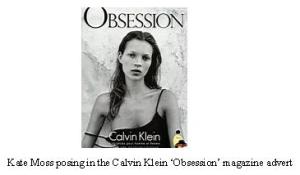
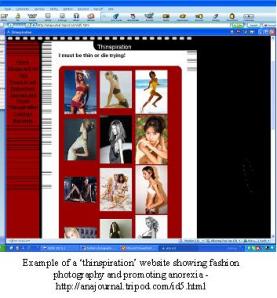



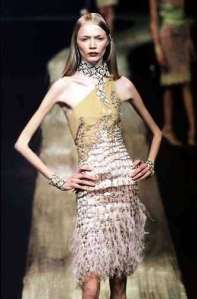
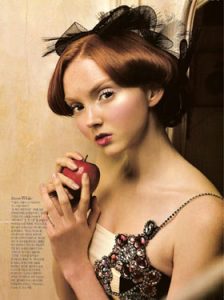

![[Fig 1] www.playboy.com - Example of Women exhibited for men](https://anthromodeologist.files.wordpress.com/2010/05/busty-babes-gaze-fig-1.jpg?w=300&h=225)

